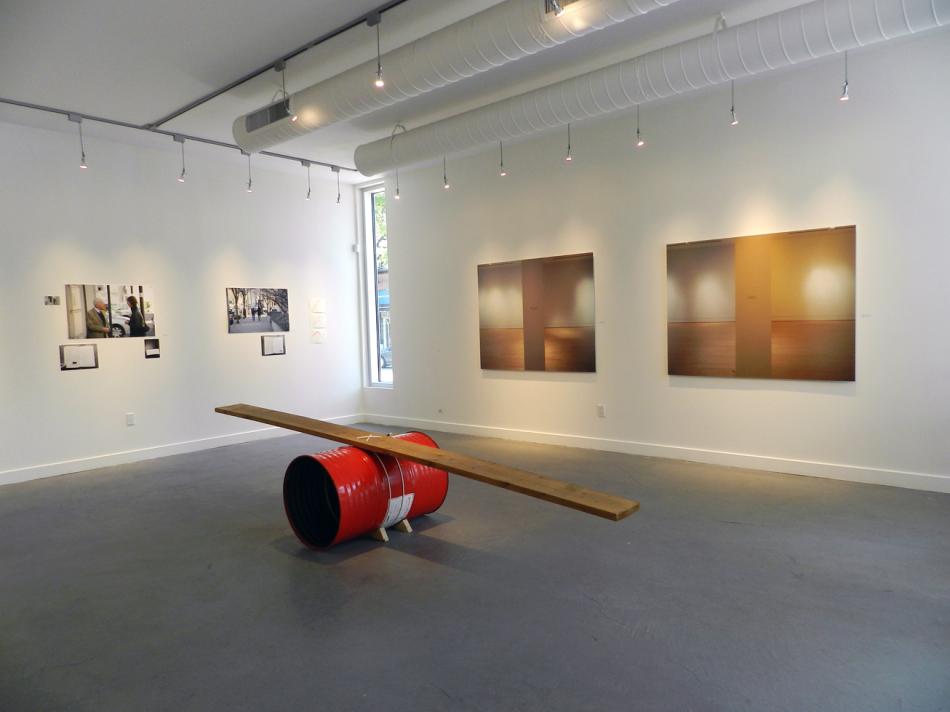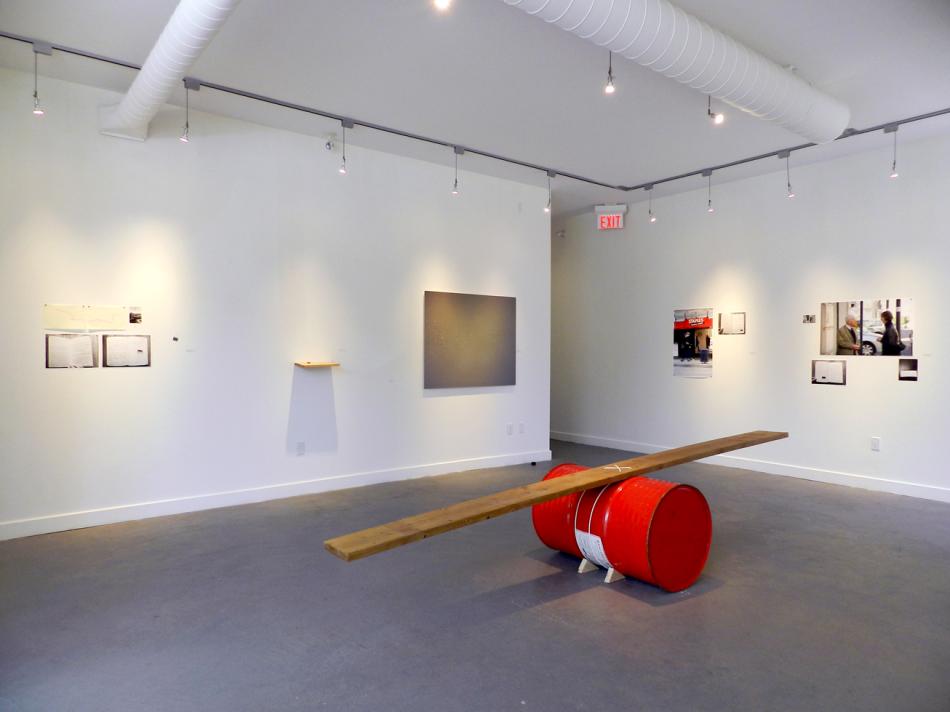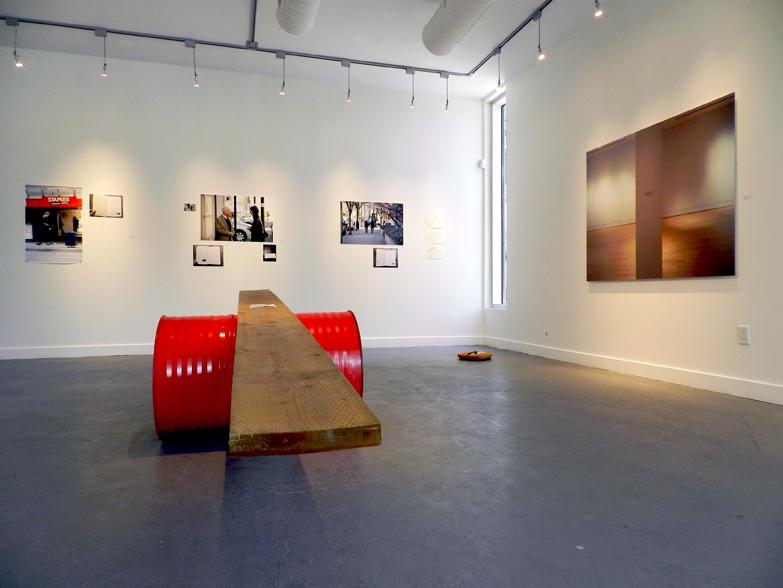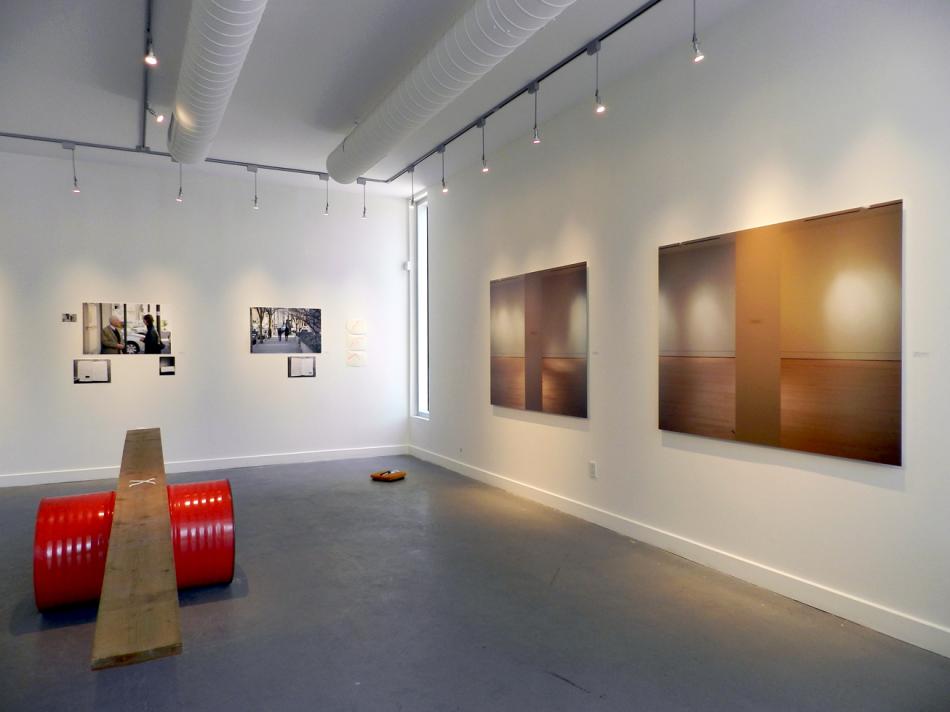CHANCE
KG Guttman, John Haney and Alejandro Tamayo
-
Opening Reception: Saturday, May 2, 2:00-4:00pm
KG Guttman, John Haney and Alejandro Tamayo intentionally investigate chance in the pursuit of an unexpected result; a result that captures the occurrence or development of a sequence of events outside the parameters of a predetermined outcome. The territory between intention and an unintentional outcome can be used as a strategy for creating art where the process of generating the work is often considered the finished work in and of itself. This invocation of unpredictability challenges our own ideas about what an artwork may be, look like, or say about the process of making art in the studio. For the artists in this exhibition, chance can begin with a simple observation, a daily activity such as walking, or may be the result of a system or set of parameters within which the artist may simply witness what occurs.
The Hamilton Artists Inc. is grateful for additional support from Jim Riley whose contributions helped make Chance possible.
Hedge Your Bets
Intentionally inviting an aspect of the unpredictable as a means to generate artwork is an interesting strategy to employ within an artistic practice. Walter Ben Michaels describes the impulse which leads artists to invite chance into their work as the, “replacement of the desire to do something with the desire to see what will happen.” Similar to playing roulette or a game of dice, artists Alejandro Tamayo, John Haney and k.g. Guttman each set up specific parameters in which the unpredictable and contingent nature of the world can be observed, challenging ideas of how artwork is created and what its final appearance may be.
Even though the world can be broken down into exact systems which interact on a specific subatomic level, chance and probability still manage to play significant roles within the universe. Alejandro Tamayo emphasizes this fact within his work. The gesture of throwing a pair of dice onto a cutting board in the work, One, Two (2014), the outcome of which cannot be predetermined, speaks to how chance cannot be avoided within our lives, no matter how intently we seek to understand it. The piece directly addresses Einstein's life long struggle to devise mathematical procedures to understand the workings of nature. Tamayo employs chance in a cheeky way by throwing these dice, poking fun at Einstein’s famous quote, “God does not play dice with the universe.” Yet, Heisenberg’s famous Uncertainty Principle states “the more precisely the position is determined, the less precisely momentum is known in this instant, and vice versa,” (Heisenberg, Uncertainty paper, 1927) –implies the opposite. The other two works, Two people of the same weight meeting on a seesaw (Seesaw, 2015) and Self Portrait as a Scale (2015), invite chance in a more social and comparative way. Making reference to Roman Ondak’s installation piece, Measuring the Universe (2007-), in which participants are asked to record their name and height on a gallery wall, both of Tamayo’s objects ask the viewer to participate in more of a private exchange, where they are asked to measure their own weight in comparison to the artist’s.
Like Tamayo, John Haney uses chance as a means to cast light on the unintentional beauty an in between space can have. Engaging with institutional critique, this series questions the importance of the spaces artworks inhabit. Large-scale photographs from Haney’s Intermezzo series highlight the transient nature of the white cube between exhibitions in public galleries and museums. Playing a game of ‘spatial roulette,’ Haney never knows what these spaces will look like until he photographs them. Using incidental traces of the last exhibition, Haney documents these spaces in a meticulous and deliberate way using a large format camera (Wisner 4x5). The residue of the last exhibition creates an ephemeral, ghost-like sense of space, one that references the past and also quietly anticipates the future. Haney’s precise and controlled style of documentation is at odds with the haphazard nature of the spaces he encounters creating tension within the work. When contemplating this series, one cannot help but notice the almost metaphysical quality of the work. Questioning the importance of the appearance of the spaces artworks inhabit during exhibitions surface as one meditates upon Haney’s series.
k.g. Guttman also engages with the concept of chance in her practice in a very particular way. Guttman approaches people on the street and merely asks them, “May I accompany you?” If her offer is accepted, she simply walks with these strangers to their destination. During this process, Guttman has to commit to following that person to where ever they may go. Guttman never knows if she will be accepted as a transient witness to her subjects’ daily activities or if she will be rejected. As such, each trip is an exhilarating gamble, a game of ‘social roulette’, each lasting anywhere from ten minuets to a couple of hours. The act of observing and piggy-backing onto another’s plans is a simple yet provocative gesture of chance. Guttman’s role as a transient companion to these strangers is both the generative and culminative aspect of the final work, where maps and photographs serve as documentation of Guttman’s chance encounters.
Alejandro Tamayo, John Haney and k.g. Guttman each employ chance as a means to generate artwork. Employing chance within artistic practice asks us to consider alternative ways in which art may be created. Whether it is a simple gesture such as throwing a pair of dice, an observation or an unexpected encounter, chance, when used as an artistic method eliminates preconceived biases of what an artwork may look like or be, instead allowing the entropic nature of the universe to be explored and celebrated.
Ailish Corbett




